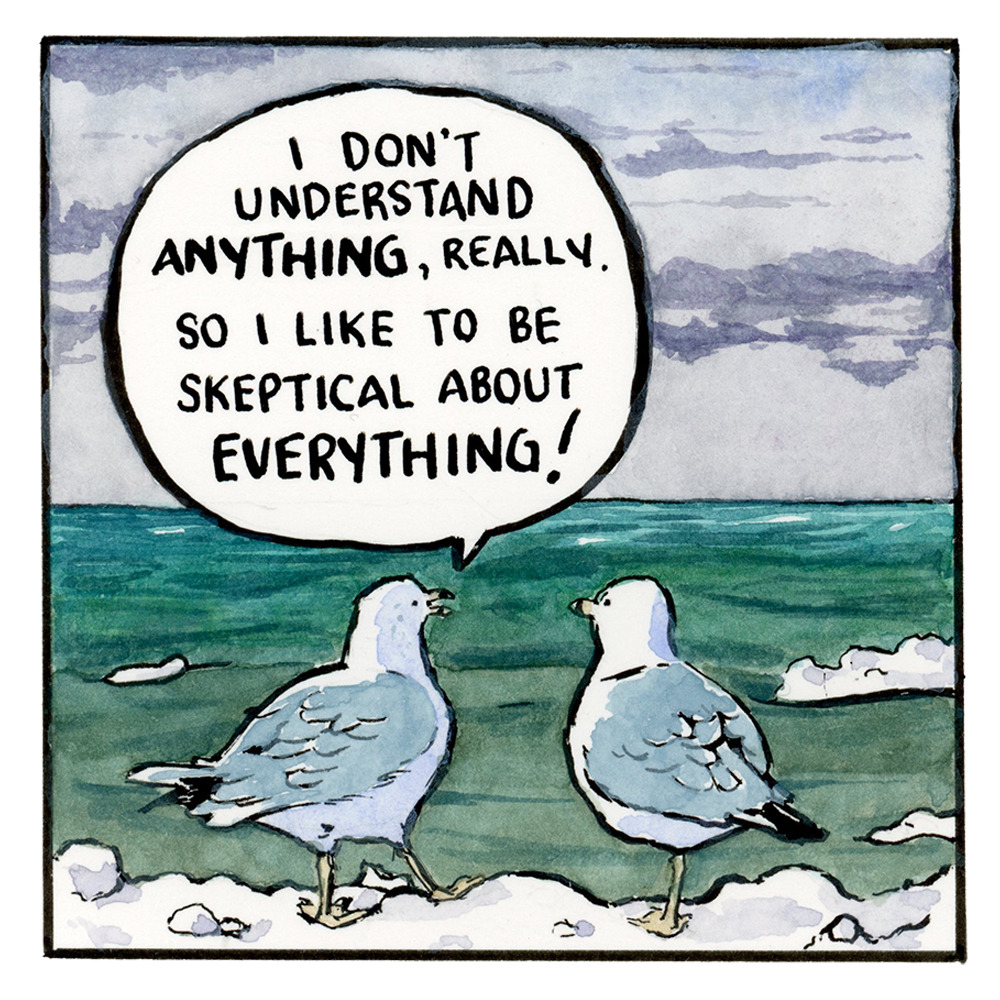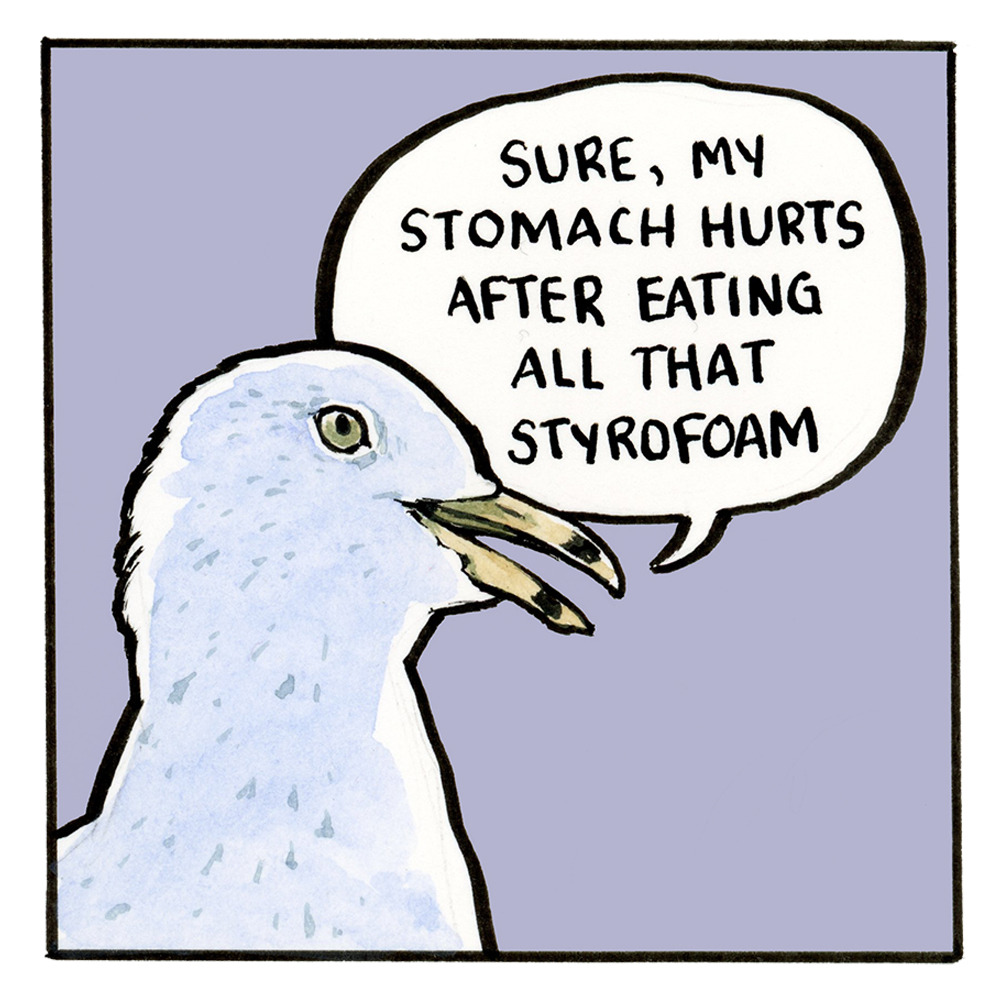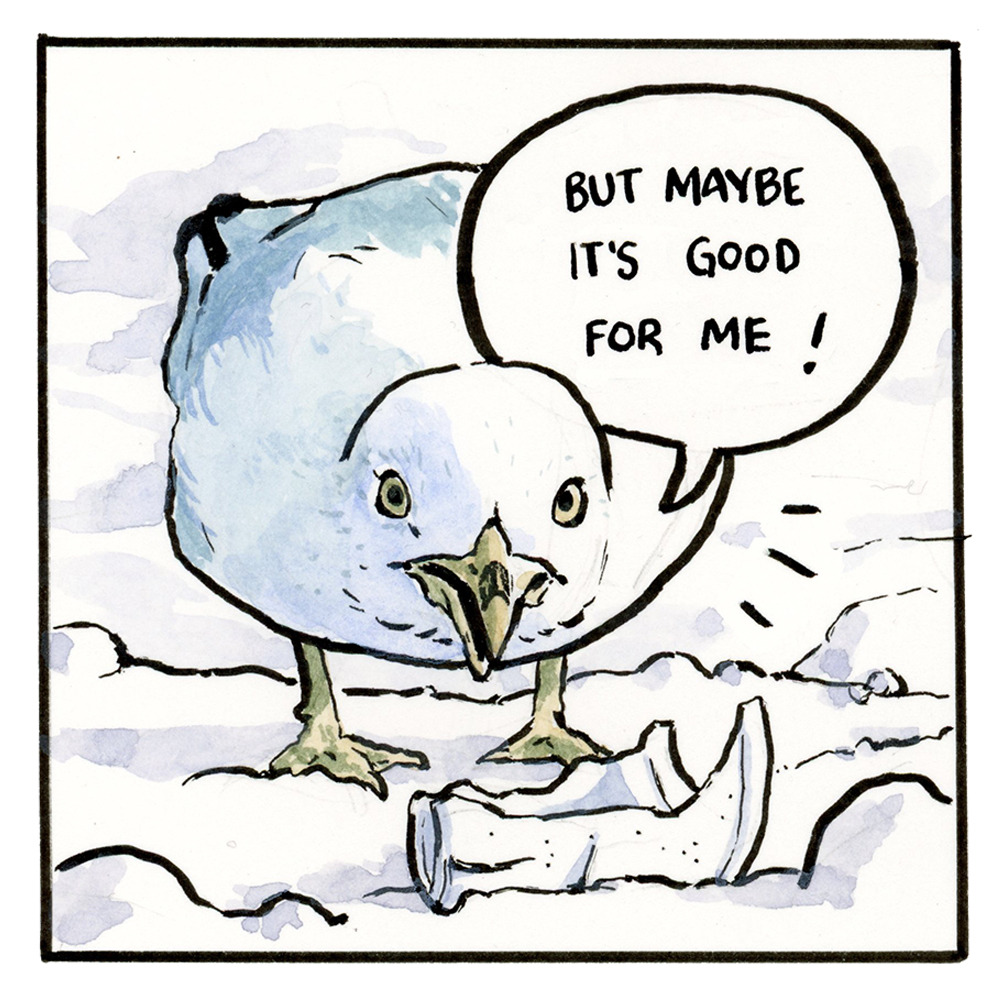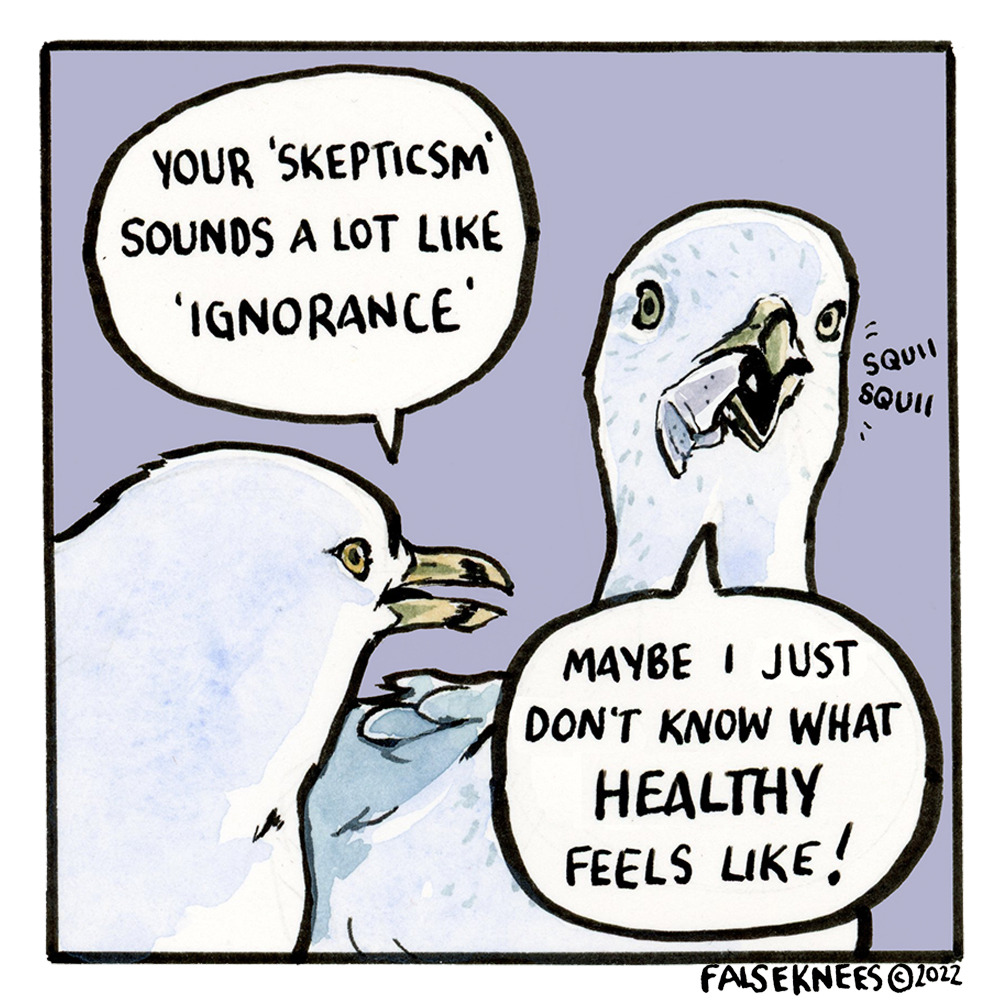The room was small, and it smelled of salt water and bleach. As she stood in the doorway, Caroline heard the gentle slosh of waves lapping against the walkway that went around the interior of the building. Similar walkways were layered above her, each with their own set of rooms. Some of the other residents were using their walkways as balconies, their voices a dull murmur in the dim light. Music echoed sadly around the dim, watery courtyard. Someone started shouting, and Caroline tensed, then took a deep breath. Different place, different people, nobody here knew her well enough to shout at her like that. She glanced back, then stepped into her new home and closed the door.
Silence.
The murmured conversations, the shouting, the music, the water – all cut off in an instant. She let her backpack slide off her shoulders holding on to it by one strap. The crisp breeze from the central AC vent slowly brought her out of the haze of travel as she looked around her room.
A small bed was fixed to the wall about one meter below the ceiling, with a ladder going up to it. Underneath it was a simple desk and a chair. The desk was no more than a flat surface with a softly glowing screen built into it. The small latch at the front edge told her it could flip up. The rubberized hinges near the wall told her what she already knew – this room was expected to flood sometimes. Bookshelves, cabinets, lights, and power sockets were all at shoulder height or above. In the corner opposite the bed was a small shower stall, with a squat toilet for a drain, and a fold-out sink that emptied into the same. The door behind her had a fingerprint lock already tuned to her, and a deadbolt she could throw from the inside. A small screen gave her a view of the walkway outside her door, and the dark pool of the “courtyard” beyond it.
Caroline took a deep breath, a smile tugging at her lips. It was hers. For as long as she wanted it, this sad little room, and its wonderful silence were hers. She stretched up to hang her backpack on a hook at the top of the door, and walked over to the bed’s ladder. It was cold to the touch, but completely solid. It didn’t shift or even creak as she climbed up it and lay on the bed. If she reached up, her fingertips touched the ceiling. There was a socket and a couple holes where she could hang her own display screen if she wanted one she could look at while lying in bed. That was high on her list of things to get, once she had money.
Had she ever tried to sleep in a place this quiet? It seemed like the gentle rumble of the train from Indiana, and the murmur of other passengers was the nearest thing to the silence that rang in her ears that first night. In the end, she clambered off the bunk, and used the console in her new desk to bring up the noisemaker she’d used at night to drown out her family’s shouting and shows. It brought bad memories, but then it brought sleep.
Caroline’s alarm woke her at 7am, and hunger kept her from the temptation to sleep in. She slid down from the bed, and took down her backpack to dig out a food bar. She took a big bite and chewed it as she filled her water cup at the tap, and dropped a caffeine tablet in it. The cup fizzed softly as she set it on the desk, and began digging supplies out of her bag. When she left her parents’ house she brought paints, a couple blank canvas boards, and five finished paintings. She swallowed, and took another bite. The bar was bland. A little salty, a little starchy, a little oily. She folded the wrapper over the end of the bar, and sat at the desk, putting a blank canvas board and stared at it. She washed down the food with a swig of sparkling, bitter-sweet caffeine tonic and let her mind wander.
She hadn’t said goodbye. Did she regret that? Caroline wasn’t sure. She’d left a note, and gotten out of their lives like they’d always said she could, if she had a problem. No need to look back. The train from Indiana had been a smooth ride, but cold compared to the heat to which she was accustomed. As the train neared the east coast, New York’s famous clouds had set in, and the world seemed chilly and gray. The warm humidity and salt air of the city had been an encouraging welcome as she left the train. The residence office was in the train station, and her trip from there to the public housing complexes had been short, and mostly indoors. She’d only caught the occasional glimpse of the canals that criss-crossed the city. The blank canvas remained blank. She took another swig of tonic and got up.
Time for a run. Her clothes weren’t ideal, but they were what she had right now. She left her room and walked to the monitor desk. Every floor had someone keeping an eye on the public spaces. Right now it was a young woman with dark hair pulled back in a ponytail.
“Um, hi.”
The woman looked up from her tablet.
“Hello.”
“Is…” Talking was hard. “Sorry, I’m new here. Is there somewhere I could run?”
“Run?”
“As in, go for a run? For exercise? Maybe some kind of footpath or something? Foot dock?”
“Oh.” The woman looked at the air above Caroline’s head, then at the gently rippling water beside them. “Yeah. Causeway two floors up. Moving walkways if you’re in a hurry, normal flooring if you’re not. Watch out for people getting on and off. Design’s not great so people run into each other sometimes if it’s busy. ‘Specially new people.” She shrugged, as if in apology.
“Thanks,” said Caroline. “The elevator’s that tube near the end of the hall?” She gestured to where she’d come in the night before.
“The lift. Yeah.”
“Ok. Ok, thanks again.” Caroline turned to go, then paused. “Uh, hey what’s your name?”
“Maud. I’m here sometimes. Schedule isn’t regular but you’ll see me around.”
“I’m Caroline. Thanks for your help, it was nice to meet you.”
“Nice t’meet you.” Maud glanced up, making brief eye contact. “Welcome t’New York.”
“Thanks”
Caroline waved at Maud, who was already staring at her tablet again, and walked down the hall to the lift. Made a kind of sense that someone working a job like that wouldn’t be very talkative. The causeway was a long, echoing hall that stretched off out of sight along the Broadway Canal in both directions. A sparse, but steady stream of people glided past on the moving walkway, with rather fewer using the stationary paths on either side. The people didn’t look any different from those she’d grown up around in Terre Haute, except that she wasn’t seeing any of the heavy tans she was used to. New York’s famous clouds brought famous rain, and most of the population spent most of their lives indoors, it seemed. The glass wall across from where she exited the lift overlooked the canal, the view occasionally blocked by vines growing down the walls of the building. She waited for a gap in commuters, and then scampered across the causeway to peer out the windows. A few locals gave her a funny look, but she ignored them and pressed her face and hands against the warm glass.
Where Terre Haute had pulled back from the rising seas, put up levees, and kept its feet dry, New York City had done some re-engineering of its buildings and sewers, and then let the water take the streets, until the Island of Manhattan became a humid archipelago of buildings, many covered in dripping plants. The water below reflected the ever-gray sky, rippled by the occasional drop of water, falling leaf, or fish pushing at the surface. To the north, almost out of sight, she could see a rowboat crossing the canal, and as she peered down red light caught her eye. A small submersible drone was slowly gliding below the surface, a red light blinking on its back at regular intervals. Behind it drifted what appeared to be a net full of bits of garbage. She’d always heard the canals were kept clean, apparently this was how.
The Terre Haute Harbor wasn’t exactly filthy, but most folks didn’t swim in it. Apparently New Yorkers were in and out of the water all the time. Following the blinking red light with her eyes, Caroline caught glimpses through the surface as ripples reflected the shadowed walls of the buildings, rather than the gray sky. The water was clear enough to see to the bottom, some ten or fifteen meters below the surface. She thought she could see fish, but it was hard to tell. If they were there, they blended in with the bottom of the canal, which combined with the reflected sky to render them almost invisible.
A jogger passed by, reminding her of why she was there. Turning from the canal, she looked up and down the causeway. Rather than cross the moving walkways again, she started jogging slowly with the flow of traffic. The unmoving section she was on had a shiny surface, but it had a subtle give to it. Every impact of her feet was just a little lighter than she expected. Without thinking, she picked up her pace, running lightly down the seemingly endless causeway.
The commuters streamed by on one side, and the canal on the other, as Caroline lost herself in the rhythm of her feet and her breathing. She ran in a meditative state until a sudden change in the light caused her to look around, and then the smell of food caused her to stop.
The causeway had taken a slow turn to the left, running through one of Manhattan’s massive skyscrapers. The entire floor had been turned into a food court. Chairs and tables filled the space next to the causeway, and behind them food stalls offered a variety of foods. After the blandness of her food bar, it felt like her sense of smell was heightened. When she reached the first booth, she confirmed what her nose had told her. Pieces of chicken, starched and deep fried, glazed with an orange-golden sauce that seemed to be glowing softly under the food court’s warm lighting. The tangy, sweet smell made her mouth water as she stared at the food.
“What can I get for you?”
Caroline jumped, and stared at the man behind the counter. He was watching her with a raised eyebrow, and the tight lips of someone suppressing a grin. She felt her face flush.
“I don’t haveanymoney,” she explained as she charged away. She eagerly sought that trance she’d been in before, but was distracted by the intrusive image of herself, looming over the food, mouth slightly agape, completely oblivious to the person on the other side of the counter.
She decided to focus on her surroundings. Having left the food court and its tower, she once again had a long glass wall to her right. As she ran, the view alternated between thick mats of vine, and the damp, plant-covered buildings across the canal. She ran through another building, this one with a café and lounge, and emerged to find that the window was on the other side of the causeway. In place of the glimpses of New York City, she had a long wall of artwork.
Caroline slowed, and stopped, looking at a pattern of solid black vertical columns and flowing colors. She walked on, and the flowing colors twisted together, ever tighter, until they became brightly colored cords of rope forming a mesh around the columns, which then began to take on colors of their own. The work of different artists took over as she walked, and the columns and rope mesh merged together into a glowing animation of countless people and machines re-enforcing and rebuilding the foundations of the columns, now revealed as towers. The tiny animated workers and machines got onto a broad flat structure, and floated up as the canal barriers were lowered, and the sea flowed in. A glorious sunset reflected on the waters of the canal and the windows of Manhattan’s towers, and the video looped back and began again. Next came an impressionistic painting of clouds partly covering the sun, and those same towers falling under a shadow, with the last rays of sunlight landing on the waters outside the city.
Running forgotten, Caroline kept walking, following as the history of the city was passed off from one artist to the next, through the attempt to re-impose the ancient empire, to the revolution that ended the Redwater Occupation, to the rise of the New Guilds and the arrival of the Fae, and…
And she had reached the present. A wizened old man stood on an elevated platform, ignoring the world as he worked with bright metal wires that flowed from the metallic detailing of the previous piece. Caroline’s eyes wandered across the man’s project. A long section of wall was covered in complex engraved patterns. The artist was laying copper, gold, and silver wires into the engravings, filling in the patterns with different colors, revealing the larger picture. History was being recorded before her eyes; New York as it existed in the present, laid out in shining wire patterns. It was a story that she couldn’t see, because it was still being written.
And she was part of it now.
She watched the man inlaying wire for a time, then turned and walked back the way she came. There weren’t enough people for it to matter that she was walking in the “wrong” direction. Even so, she almost ran into a couple other people as she followed the mural back in time. She passed the beginning and kept walking, lost in thought until the smell hit her again. The food court had desserts, sandwiches, wraps, soup, noodles, and half a dozen other things, but the smell that hit her first was that same orange chicken. She looked up, stumbled backward, and fell over.
The man from the food court was standing over her, eyebrow raised even higher, and his grin now unrestrained. He was holding a tray.
“I saw you coming back. You don’t need money at food courts. They’re covered by the city so people who don’t have money aren’t just stuck with food bars. I’m Mick”
He set the tray on a table next to him and offered Caroline a hand. She took it, and bounced to her feet.
“Caroline thank,” said Caroline. “I mean, thanks. I’m Caroline I didn’t know. I’m new in town anduh…”
“Yeah, that was kinda clear. Where are you from?” He sat down at the table with her, and pushed the tray towards her. She began eating.
“Ar’hm fom Turhote.”
“What brought you east?”
She swallowed.
“Don’t want to talk about it.”
He nodded and stood.
“If you have any questions about the city, I’m here about half the week.”
“Thanks.”
He went back to his food stand, leaving Caroline with her meal. The chicken tasted as good as it had smelled, and came with broccoli and salty stir-fried noodles. As she ate, she looked around the food court. There were windows overlooking the canals, farther from the causeway. About halfway between causeway and window was a column of stone and moss that had water trickling down from the top, near the ceiling. As she watched, lights embedded in the “stone” glowed and faded, making the whole fountain sparkle like something from a cartoon. She watched it, mesmerized, as she ate. She placed her tray in one of the tubs set out for that purpose, and went back to Michael’s counter.
“Hey look, sorry for cutting you off, I just…”
“Don’t worry about it.”
“How often can we get a meal at places like this?”
“Once per day, though I don’t recommend eating orange chicken every day.”
Caroline rolled her eyes.
“About that mural thing.”
“The story of Manhattan?”
“Yeah. Kind of. Also the fountain.”
“The fount-”
“How do artists get money here?”
“Ah.” Michael scratched his chin. “I honestly have no idea, but I have a friend who might? Check back tomorrow, and I’ll let you know when Roark has time for a chat.”
“Oh, that’s great! Thanks Michael, and thank your friend in advance when you talk to them. It’s lovely to have all the food and shelter I need, but…”
Michael gave her a crooked grin.
“But the guaranteed food is boring as hell, and you need resources for your art?”
“It’s like you know artists!”
“And I’ve lived in places similar to where you probably are right now. They put you at water level?”
Caroline nodded. “Pretty close.”
“It won’t flood. It hasn’t in decades and they say the water has begun to fall.” He pulled a pendant out of his shirt; a stylized combination of sun and moon, with three stars above them. “And when the waters fall enough, the clouds will fade away, and we’ll get to see the sky again.”
“Oh!” She glanced out the window, and back at Michael’s pendant, as he tucked it into his shirt again. “Yeah, I’d heard about that, and I’ve seen it now, of course. I never even thought about what it might be like to live with only clouds!”
“You get used to it. Maybe that’s why we’ve got so much other stuff going on.”
“Like the art?”
“Like the art.”
Caroline stepped back as a couple customers came in from the causeway, and Michael served them. As they left, Caroline returned to the counter.
“I should get home and figure out what to do next. I’ll check back tomorrow?”
“Sounds good. I’ll do my best to have an answer for you for when Roark can talk to you.”
“Thanks again, for the food and for the help!”
“I like it here, and I want everyone else to like it here too.” Michael waved at her. “I’ll see you tomorrow, then.”
“Tomorrow.”
Caroline walked back to the causeway, and spotted a tall man emerging from a small lift. The sign next to it made clear that this was a place to cross under the causeway. She turned and found the lift on her side. She crossed and resumed her run, jogging back to her new home.
To be continued…
Thank you for reading. If you find my work interesting, useful, or entertaining, please share it with others, and please consider joining the group of lovely people who support me at patreon.com/oceanoxia. Life costs money, alas, and owing to my immigration status in Ireland, this is likely to be my only form of income for the foreseeable future, so if you are able to help out, I’d greatly appreciate it. The beauty of crowdfunding is that even as little as $1 per month ends up helping a great deal if enough people do it. You’d be supporting both my nonfiction and my science fiction writing, and you’d get early access to the fiction.




